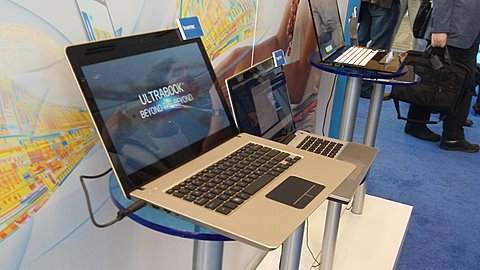Analysts at ABI Research confirm Intel’s ultrabook platform has yet to take off – despite an extensive marketing campaign by Santa Clara.
According to ABI Research analyst Jeff Orr, Intel may have “jinxed itself” with a premature prediction that 40% of all notebook computers this year (2012) would be ultrabooks.

Indeed, uptake of thin and light portable computers during the first half of 2012 was disappointing, though new ABI projections forecast the shipment of 20 million during 2012.
For the uninitiated, ultrabooks – a term coined by Intel for ultra-portable computers based on its processor architecture – are part of the broader portable computing market typically associated with the terms “laptop” or “notebook” PC. Targeted at mid-range prices, the most popular ultra-portable today is Apple’s MacBook Air.
“Initial ultrabooks came to market several hundred dollars above consumer expectations. High systems prices and waiting for the upcoming Windows 8 operating system are two leading reasons for lack of adoption,” said Orr.
”Next-generation systems that bring prices down closer to audience requirements along with touch-screen models that provide versatile input methods are promised for 2013.”
Orr emphasized that the ultra-portable segment offers significant growth potential – if consumer expectations are met. To be sure, a healthy growth rate of 53 percent is predicted over the 2012 to 2017 forecast period. The analyst also noted that the majority of PC OEMs have shifted focus away from the low-margin netbook toward more profitable media tablets.
“The remaining netbook vendors are focused on educational deployments as a learning tool. Both OLPC and Intel’s Classmate PC partners continue to promote the use of technology within classroom settings all over the globe.
“More than 15 million netbooks are expected to ship worldwide this year. Latin America has already taken advantage of the netbook opportunity, while the Eastern European markets are ramping deployments,” Orr added.






